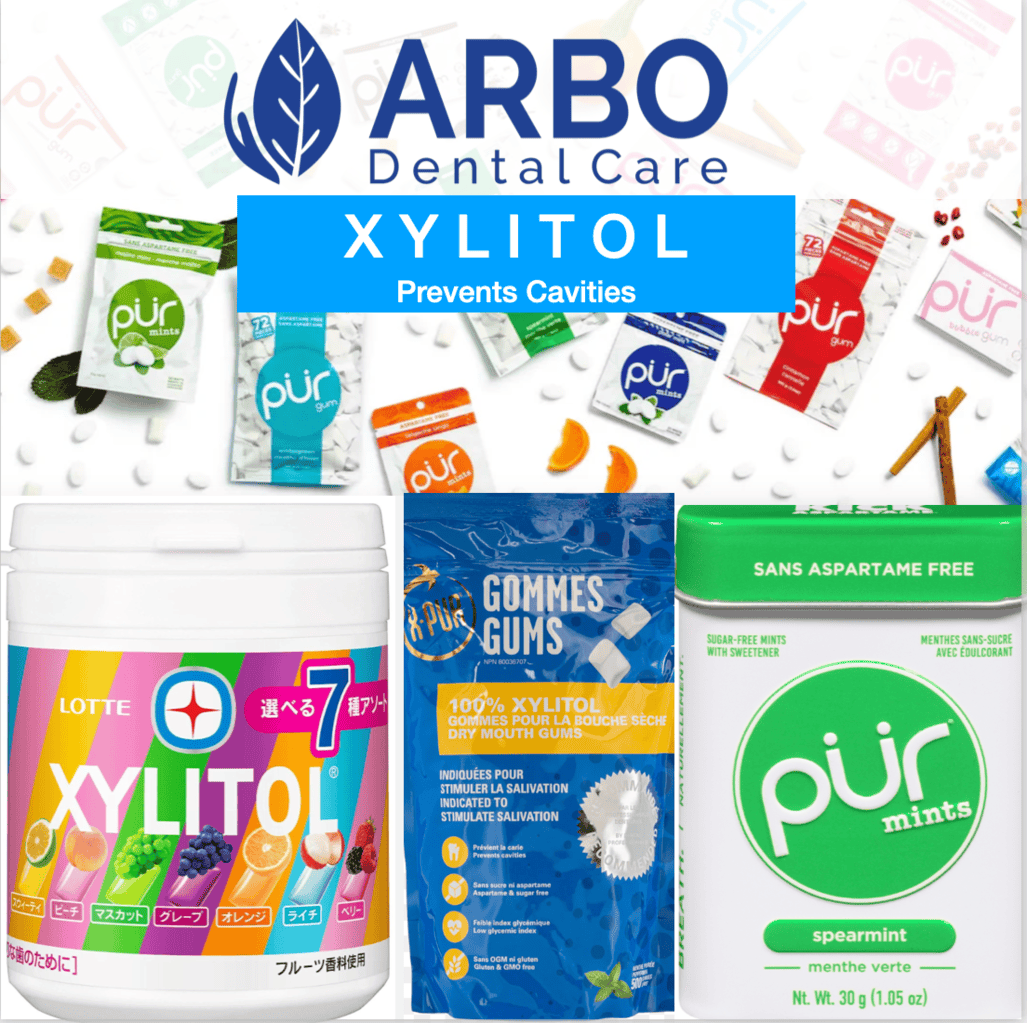Back
Sugar-Free Sweets and Oral Health: Are They Really Better for Your Teeth?
Short version: Best option is xylitol mints. Xylitol is the best sugar-free alternative to avoid cavities. Xylitol mints or soft options are better than chewing gum.
*Xyltiol is not good for pets, particularly dogs. Please keep it very clear away from pets, just like onions, chocolate, etc.

At Arbo Dental Care Bradford we’re always looking for ways to help our patients prevent cavities so that they don’t need fillings, root canals or risk losing a tooth.
Dentistry as a whole has probably over-informed everyone on the issues of sugar, teeth, and bacteria-causing cavities.
So what about sugar-free alternatives? What’s the difference among them in terms of oral health?
To start NOT all sugar-free alternatives are the same.
Many sugar-free gums, candies, and mints contain artificial sweeteners like aspartame or sucralose, which don’t contribute to cavities but also don’t offer any additional oral health benefits. Others contain sugar alcohols like sorbitol and maltitol can still allow bacteria to cause cavities, although not to the same extent as sugar, corn syrups, etc.
One standout ingredient, however, is xylitol—a natural sugar alternative that not only avoids feeding cavity-causing bacteria but also actively reduces their growth.
Why Xylitol is a Better Choice
Xylitol works by disrupting the metabolism of Streptococcus mutans, the main bacteria responsible for dental cavities. Unlike regular sugar, bacteria cannot digest xylitol, so their ability to stick to teeth and multiply is weakened over time. Regular exposure to xylitol, particularly in mints or gum, has been shown to:
-
Reduces number of cavity-causing bacteria
-
Reduces the ability of cavity-causing bacteria from sticking to teeth
-
Increase saliva production, which helps neutralize acids and promoties remineralization of enamel
Xylitol Mints vs. Xylitol Gum
While xylitol gum is often recommended, xylitol mints may be an even better choice for people who want the oral health benefits without the drawbacks of chewing gum.
-
More consistent exposure: Mints dissolve slowly, keeping xylitol in contact with teeth longer than gum, which can lose its sweetening agents over time.
-
No jaw strain: People with TMJ issues or a history of jaw pain may find that mints provide all the benefits of xylitol without the need to chew.
-
Easier to use: Mints are more discreet, require no chewing, and can be used in professional settings where gum might not be appropriate.
How to Use Xylitol Effectively
For the best results, dentists recommend consuming at least 5 grams of xylitol daily, spread out in small amounts throughout the day. This can be done by:
-
Choosing xylitol mints or gum with xylitol as the first ingredient
-
Having one after meals to stimulate saliva and neutralize acids
-
Avoiding xylitol products that also contain cavity-contributing sweeteners like sorbitol
The Takeaway
Not all sugar-free alternatives are equal when it comes to oral health. While traditional artificial sweeteners simply replace sugar, xylitol actively benefits your teeth by reducing cavity-causing bacteria and promoting remineralization. Xylitol mints, in particular, offer a simple, effective, and dentist-approved way to improve your oral health—one mint at a time.
If you’re looking for a sugar-free alternative that does more than just avoid cavities, xylitol mints or soft candy is your best bet.
At Arbo Dental Care Bradford we’re always doing our best to make dental research, technology more accessible and applicable to our patients’ day to day lives.
Thank you for reading